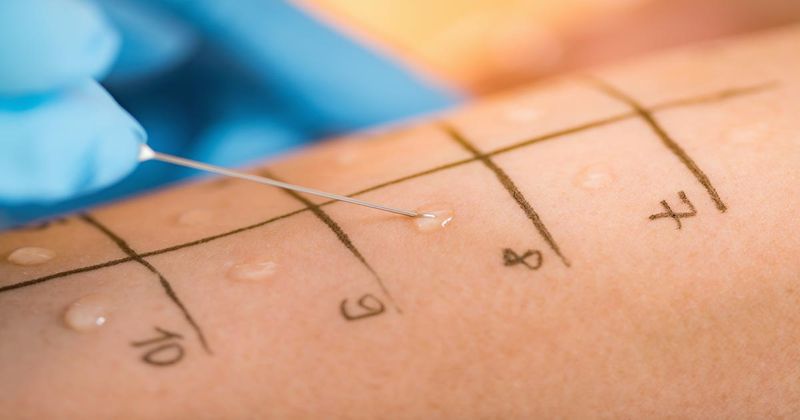Delay for allergy skin testing unnecessary after anaphylactic reaction to food
Key takeaways:
- All participants showed no false-negative results when tested 2 weeks after anaphylactic reaction to food allergen.
- Accurate diagnoses let patients know which foods they should avoid.
The need for a delay in skin prick testing for food allergy following an anaphylaxis reaction might be unwarranted, according to a study published in The Journal of Allergy and Clinical Immunology: In Practice.
Despite historical recommendations to delay SPT after instances of anaphylaxis, citing a delay in accuracy and the possibility of false-negatives, all of the participants in the study exhibited a reactive skin test to the food allergen within 2 weeks of reaction.

The optimal timing for diagnostic SPT after food-induced anaphylaxis is unknown, Monica T. Kraft, MD, assistant professor, division of allergy and immunology, department of otolaryngology, The Ohio State University Wexner Medical Center, and colleagues wrote.
“My coauthors and I designed this study to answer the question: ‘Is there any reason to delay allergy skin testing to a food if a patient recently had an anaphylactic reaction?’” Kraft told Healio. “We had observed practice variability among even our own allergy division and other allergy providers regarding whether to offer skin testing in that clinical scenario, or recommend the patient return more than 4 weeks after the anaphylactic event to avoid a false negative skin test result.”
Existing literature has only demonstrated the risk for a false negative skin test in anaphylactic reactions to stinging insect venom, specifically bees, as well as certain drugs, such as anesthesia. This study evaluated if food-induced allergic reactions also ran the possibility of creating false-negative test results.
“Our findings are significant in that they are the first study, to our knowledge, to specifically examine food-induced anaphylaxis and prospectively skin test patients to the culprit food at two time points, showing the skin test does not change whether you test within 1 to 2 weeks of reaction, or delay more than 4 weeks after the reaction,” Kraft said.
The study examined the rates of false negative results in early SPT at 2 time points in pediatric patients aged younger than 18 years. Initially, 26 patients participated in the study. One patient was lost to follow-up after the initial visit, and one was excluded due to undeterminable causative food anaphylaxis. The final analysis included 24 patients.
Participants were divided into two cohorts. The primary cohort (n = 14; median age, 5 years) was identified after having experienced a systemic reaction to a food allergen that happened during an oral food challenge at an allergy clinic. The exploratory cohort (n = 10; median age, 3 years) was identified after having received medical care for an allergic reaction in the community where the administration of epinephrine was more likely to be delayed.
Six of the patients in the exploratory cohort presented with a new food allergy diagnosis, and four had a known food allergy diagnosis with an accidental ingestion.
Participants received their first SPT 2 weeks after the reaction and the second 28 days after the reaction. The study defined a positive result as wheal size 3 mm greater than the negative control, which was a glycerol saline diluent.
Researchers defined the primary end point of the study as the proportion of patients that had a negative initial test but then later tested positive on follow-up.
The results showed that all participants had a positive SPT within 2 weeks after food-induced anaphylaxis as well as after 28 days at the follow-up visit.
“This study demonstrated that all patients maintained a positive result when tested within 2 weeks of the reaction,” Kraft said. “This suggests there is no need to delay a skin test for fear of a false negative result.”
Kraft told Healio that the accurate diagnosis of a food allergy is critically important to be able to quickly understand which foods a patient is to avoid.
“In some cases, anaphylaxis may be the initial presentation after unknowingly ingesting an allergen, prompting referral to an allergist,” she said. “In cases in which a patient is seen in the office soon after this reaction, it is important for allergy specialists to have confidence that the skin test is accurate, as a false negative result could be potentially dangerous if the person went on to eat that food. In our cohort, there were no false negative results.”
In the future, Kraft hopes to have a larger sample size to further confirm the findings.
“While this was an important study because it was the first to specifically look at food-induced anaphylaxis and its result on skin test reactivity, this was a small study and larger studies should be done to ensure our results are reproducible,” she said.
